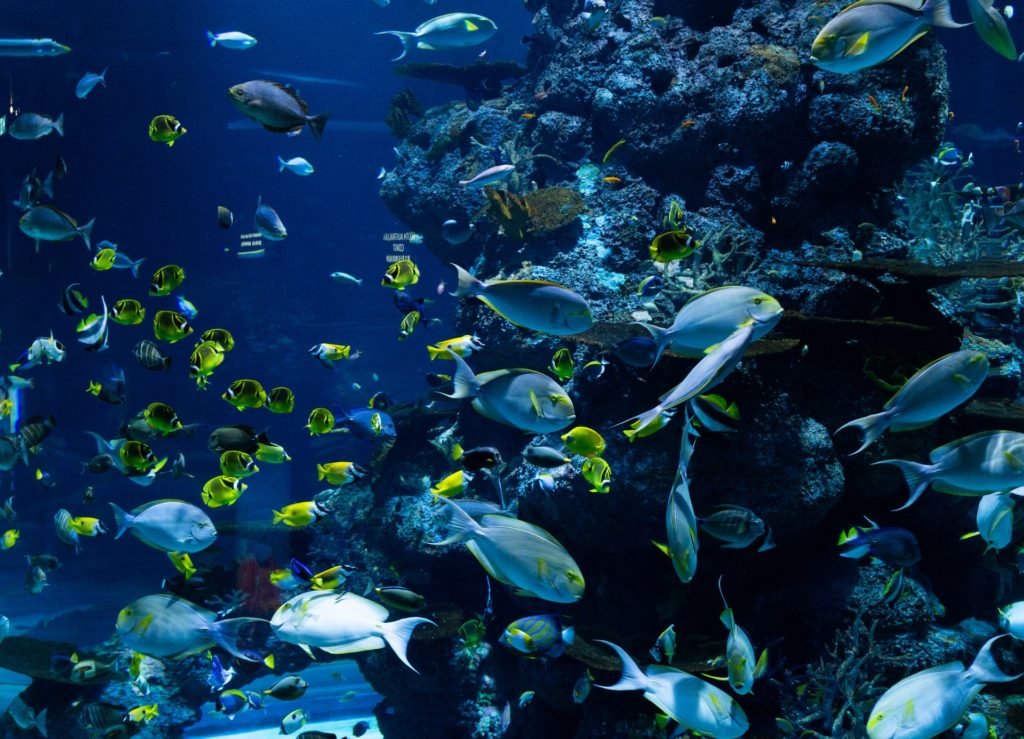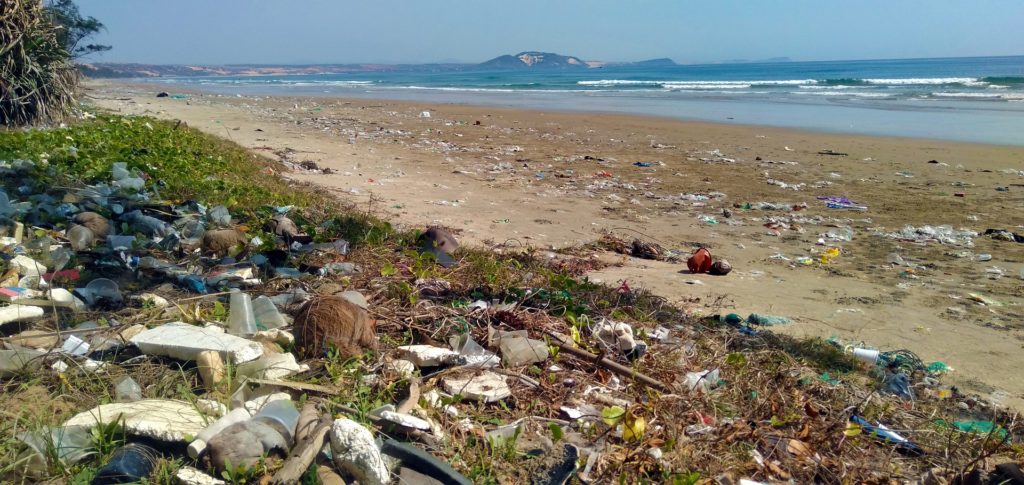
There’s some pretty well-known facts about the ocean and the impacts it will experience on account of the climate crisis. But additionally, there are some really interesting lesser known stats around the way our warming planet will affect ocean health, that of the creatures living within it, and indeed our human health, too.
71% of the Earth’s surface is covered with the oceans. 97% of the Earth’s water is contained in these oceans. And they represent 99% of the Earth’s total habitable space, by volume.
The ocean is made up of five primary layers. These are, in order of shallow to deep: epipelagic (to 660 feet); mesopelagic (600 – 3300 feet); bathypelagic (3,300 – 13,100 feet); abyssopelagic 13,100 – 19,700 feet); and hadalpelagic (19,7700 – 35, 757 feet).
The deepest two parts of the ocean, the Mariana Trench and the Philippine Trench are so deep that if Mount Everest were placed in either base, the peak would not break the surface of the water.
According to WoRMS (World Register of Marine Species) there are 239,405 different species of marine creatures. Only 18,000 of those are types of fish.

Approximately 2,000 new marine species are discovered each year, including approximately 150 marine fish species. Researchers estimate there may be as many 700,000 marine species living in the oceans, simply not yet discovered. This is on account of the fact that over 80% of the ocean has never been mapped or even seen by humans! In fact, we have explored a greater percentage of the surfaces of the moon and Mars than we have our ocean floors.
Approximately 200 million metric tons of carbon is sequestered by kelp forests, also called macroalgae.
Coastal ecosystems like mangroves and salt marshes sequester and store carbon faster and more efficiently than terrestrial forests. The loss of these areas emits huge volumes of carbon into our atmosphere: 19% of total carbon emissions from deforestation. These ecosystems are also enormously beneficial in saving land and human loss in the event of tsunamis and king tides.
The Pacific Ocean has endured over 300 nuclear blast tests.
79% of plastic waste from the US is sent to landfills (or the ocean, mostly inadvertently), with 12% being incinerated and 9% being recycled. Around the globe, one million plastic drinking bottles are purchased every. Single. Minute.

80% of marine trash and pollution originates from land, whether agricultural run off, untreated sewage, or hard debris like plastic.
300 million tons of plastic is produced every year, and 8 million tons ends up in our oceans each year.
According to the IPCC AR6 Report, the water has been warming on a long term basis, but also experiences more frequent heat waves. This is leading to more rapid acidification and decreased oxygenation.
The ocean has absorbed more than 93% of the excess atmospheric heat. In addition, the oceans absorb about 30% of anthropogenic carbon emissions (called Blue Carbon) – about 2 billion metric tons per year.
Warming waters not only impacts living organisms but creates changes in currents and increases the volume of water in the ocean.
Until 2013 the rate of sea level rise was approximately 0.06 inches per year. However since then this rate has doubled and is now approximately 0.14 inches per year. And around 680 million people live in low-lying coastal areas, with this figure expected to hit 1 billion by 2050.

NASA blames thermal expansion for one third of the sea level rise we’ve experienced so far. The other main concern is melting glaciers and ice sheets, which are thawing more rapidly and not re-freezing in the same volumes each winter due to the warmer circulating ocean water.
Ocean acidity has increased by 30% since the beginning of the industrial Revolution, and makes many species vulnerable, especially those who use calcium carbonate to build shells or skeletal structures, like corals and shellfish.
Marine fisheries employ around 200 million people around the world.
Over one billion people depend on fish for their protein. Seafood has highest protein retention compared to chicken, pork, and beef.
Global seafood consumption has doubled in the last 50 years – if we only include what’s used for human consumption, that’s 143 million metric tons per year.
Globally, 100,000 marine mammals die very year due to plastic trash in their home.
More than 90 species of fish in European waters are considered under threat of extinction due to over fishing.
Fishing methods such as bottom trawling are devastating for the entire ocean floor and countless marine creatures accidentally killed as by-catch – bottom trawling accounts for 60% of fisheries discards.
So you might now be asking, ‘What do I do with all this information??’
Unsurprisingly, it comes back to reducing your own personal carbon footprint. And petitioning your local government members to do the same, post haste. The ocean isn’t just beautiful to look at and listen to, and home to the most incredible living things on the planet – it is absolutely an essential part of our climate regulation system, holds one of the nine planetary boundaries we should not cross, and without them, life would cease on Planet Earth. So the importance of working to protect the ocean and preserve the ability for it to support our lives cannot be overstated. When you eat seafood, make sure you seek out local varieties, research things to avoid (think, prawns, orange roughy and swordfish), and try to reduce your intake. The other thing to reduce is use of plastic – single use especially. Remember that even with your best intentions the system is currently broken and inadequate, so your item destined for recycling may still end up in landfill. And lastly, whenever you’re heading to the beach (or any waterway in fact), take a bag and some gloves and pick up some trash. It’s a little thing with huge impact – you might literally save a sea creature’s life!




